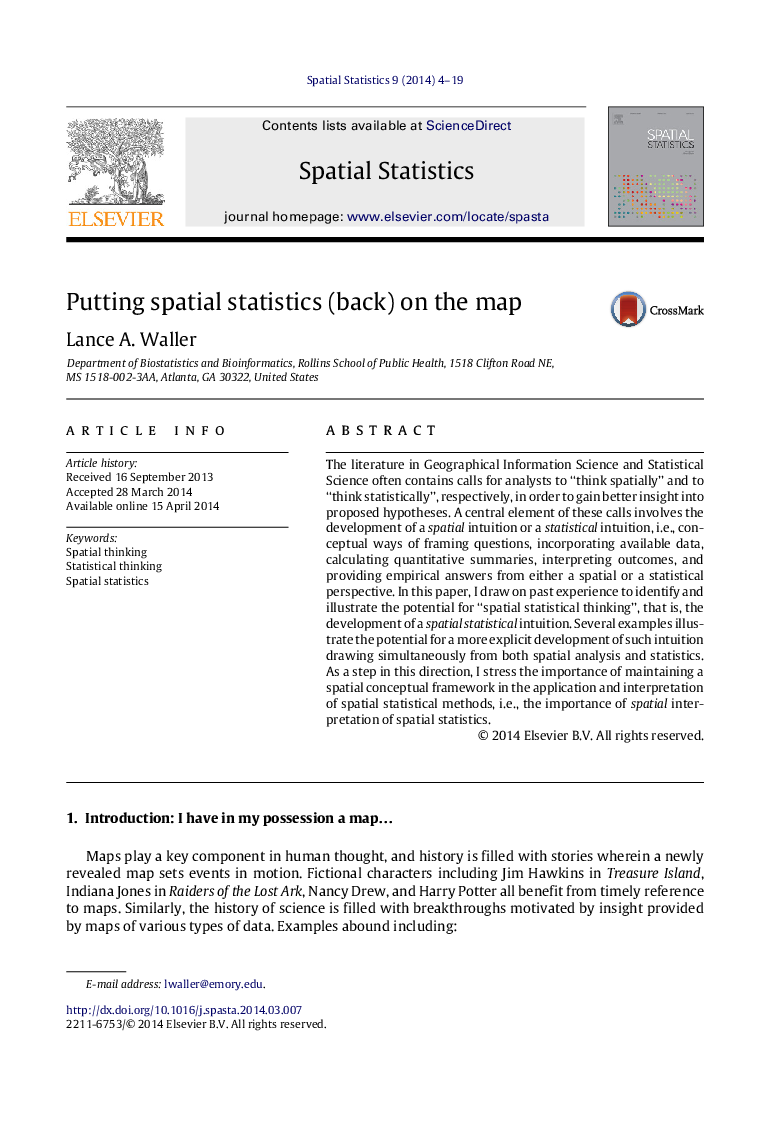| Article ID | Journal | Published Year | Pages | File Type |
|---|---|---|---|---|
| 1064596 | Spatial Statistics | 2014 | 16 Pages |
The literature in Geographical Information Science and Statistical Science often contains calls for analysts to “think spatially” and to “think statistically”, respectively, in order to gain better insight into proposed hypotheses. A central element of these calls involves the development of a spatial intuition or a statistical intuition, i.e., conceptual ways of framing questions, incorporating available data, calculating quantitative summaries, interpreting outcomes, and providing empirical answers from either a spatial or a statistical perspective. In this paper, I draw on past experience to identify and illustrate the potential for “spatial statistical thinking”, that is, the development of a spatial statistical intuition. Several examples illustrate the potential for a more explicit development of such intuition drawing simultaneously from both spatial analysis and statistics. As a step in this direction, I stress the importance of maintaining a spatial conceptual framework in the application and interpretation of spatial statistical methods, i.e., the importance of spatial interpretation of spatial statistics.
